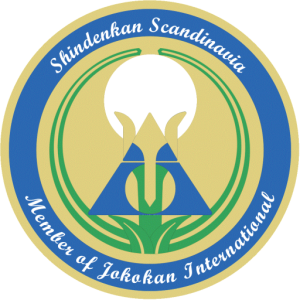By Martin E. Hansen, Member until 2018
Once again the successful and extensive Shindenkan Shiatsu course has been held. This time there were 10 participants registered, all of whom are students in a local Shindenkan school, although the course, as an inspiration course, is actually also open to outsiders who are interested in it. The 10 participants faced a process of approx. 4 months with 3 course days and an exam, where between the course days a total of 25 Shiatsu treatments had to be completed and documented. The Shiatsu course, like all other courses in Shindenkan, was developed, standardized by Kimu Sensei and passed on to assistant instructors in the Honbu-dojo, so that they can learn from and develop by passing on knowledge to the participants.
Martin Renshi had the pleasure this time to introduce the participants to the beneficial and effective world of Shiatsu massage. Shiatsu, which in Japanese means finger pressure, is known to be several thousand years old and later put into a popular system by Tokujiro Namikoshi (1905-2000) who also opened dedicated schools where Shiatsu was taught and is still done to this day. The Shiatsu course in Shindenkan uses the same techniques plus a number of others, the philosophy is that what works must also be used regardless of what it is called. Shiatsu gives an insight into understanding the body's anatomy and electrical circuits, the so-called meridians, and how they are connected. This knowledge can be used to heal the body by treating directly on the muscles, but also through the meridian pathways, which flow through the entire body and thus also the muscles. Popularly, you can say that you can consider the meridian paths as rivers and streams. Blockages can occur that dam up the water, whereby there is no balance, which is expressed as excess or under-energy. The treatment philosophy in Shiatsu is to restore that balance in the body by treating the blockages either directly or at special points and thus using the body's natural healing mechanisms. Shindenkan is a martial sport and a martial art, which also means that this knowledge is important in relation to combat, since you can cause damage through the same points. But above all, it gives an insight into oneself and other people, and if you can hurt, you must also be able to heal.
The Shiatsu course is built up in 3 modules. The first module was held on 1 March, where 3 hours were spent introducing the participants to Shiatsu and general relaxation of the body, whereby they could become stiff in the techniques and not the muscles. Until the second module, which was held on March 29, the participants then had to complete and document 5 treatments according to what they had learned, in order to become more experienced. The second module lasted 4 hours, building on top with treatment specifically of the arms and legs as well as easier diagnostics. In the philosophy of the East, there is a lot of effort to treat the cause and not, as a starting point, to treat the symptoms, as is done in traditional Western medicine. To diagnose, the participants were introduced quite easily to the energy flow through the body, the so-called organ clock. At the same time, new pressures were reviewed, including meridian stretches, which in addition to stretching the affected muscle also treat directly on the meridian(s) that flow through, for example, the leg, where the muscle is located. After module 2, the participants then had to internalize what was learned by completing 10 treatments in the month leading up to the third and final module on 26 April. It must be said that if the participants do not complete the necessary treatments, you cannot take the exam and thus pass the course, which was also pointed out several times during the course. The third module was the most theoretical, where the participants were introduced to more advanced diagnosis and causal relationships in the course of illness/injury through the organ clock and the 5 element theory as well as a review of the 12 organ meridians. On this module, the instructor also showed 2 practical treatments on two volunteer trainees who each had their own issues to deal with. Towards the final exam, a further 10 treatments had to be carried out, so that the total of 25 documented treatments could be added to the participants' CV
After the exam, 50% of the participants had passed immediately. 2 participants had voluntarily dropped out along the way and thus could not pass the course. To give the remaining 2 a fair chance, they were subsequently offered a re-exam with new questions. At Shindenkan, the same requirements apply to everyone, as we do not compromise on standards and knowledge. The Shiatsu course is a long course that places high demands on the participants, but they also get a solid Shiatsu education, which "out in the city" is significantly more expensive. In the future, Shiatsu will be part of Shindenkan's next big project, SHIELD KISS, which you can read a lot more about here on the website. Without saying too much, it will be an all-encompassing health education that will seriously change the perception around exercise, health, exercise etc. not just nationally but also Internationally and maybe challenge the established health system... who knows 🙂




